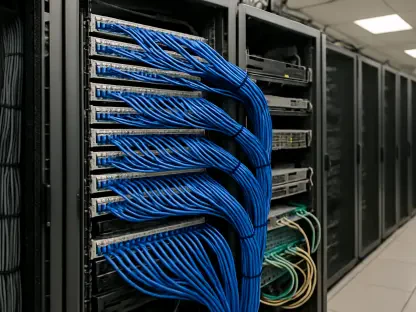Nokia’s presence at Mobile World Congress (MWC) 2025 in Barcelona was marked by significant strategic developments and announcements that signaled the company’s unwavering commitment to innovation and expansion. Outgoing CEO Pekka Lundmark addressed both their core telecom business and ventures outside the telecom sector, setting the tone for a forward-looking business strategy. The event highlighted Nokia’s advancements in telecommunications, new partnerships, and key acquisitions, all of which reflect broader trends in the company’s approach to future growth and market leadership.
Advancing Telecommunications with Cloudification and Automation
Lundmark emphasized the crucial role of cloudification in advancing 5G Standalone networks, positioning it as an essential component of next-generation connectivity. To this end, Nokia announced strategic collaborations with Bell Canada and Boost Mobile designed to enhance cloud and Open RAN capabilities. The partnership with Bell Canada involves the integration of Nokia’s AirScale portfolio with platforms from Red Hat and Dell Technologies, with the goal of driving innovation in cloud and Open RAN functionalities. Meanwhile, Boost Mobile has adopted Nokia’s Cloud Native Communication Suite (CNCS) to consolidate multiple IMS voice 3GPP functions into a single cloud-native network function (CNF), streamlining operations and improving efficiency.
Closely linked to cloudification, automation was also highlighted as a critical next step for maximizing telecom efficiencies. Lundmark referenced a study from STL Partners that projected significant financial benefits for operators through automation, estimating $800 million in annual savings and additional revenue for average-sized operators. Nokia is leveraging automation extensively, aiming to make network functions cloud-native and fully automated. The incorporation of AI was underscored with a demonstration of how generative AI can drastically reduce the time needed to create network slices from days to just minutes. This AI-driven approach to automation signifies a major shift in how network operations are managed, presenting promising prospects for increased productivity and scalability.
Interoperability and Monetization Strategies
Nokia’s commitment to creating interoperable network components was another key theme highlighted at MWC 2025. Lundmark underlined the company’s orchestration capabilities and its unique position as the only vendor with proven interoperability across all Radio Access Network (RAN) layers. This flexibility allows communication service providers (CSPs) to purchase components from various vendors, achieving optimal performance and cost efficiencies. A significant highlight was Nokia being awarded over 3,000 sites by Deutsche Telekom to support its Open RAN network in Germany, marking an essential scale-up of a multi-vendor O-RAN network and reinforcing Nokia’s leadership in interoperable solutions.
Monetization was positioned as a critical focus area, with Nokia introducing tools like the network-as-code platform to explore new revenue avenues. Lundmark cited the example of an API for SIM card swap and number verification, which is used as a security solution for banks and retailers. This step toward monetization enables CSPs to leverage their networks for additional revenue-generating services. Over 50 customers, including major global operators, are already utilizing Nokia’s network-as-code platform for various applications, illustrating its commercial potential. By enabling new revenue streams, Nokia is helping CSPs maximize their investments in network infrastructure.
Expanding into Defense Communications
Nokia is actively pursuing growth in adjacent markets, notably in defense communications, reflecting the company’s strategic diversification. A prominent development announced at MWC 2025 was the partnership between Nokia, Lockheed Martin, and Verizon. Nokia’s military-grade 5G solutions have been integrated into Lockheed Martin’s 5G.MIL Hybrid Base Station (HBS) at its Experimental Network site in Florida. This collaboration underscores Nokia’s strategic pivot towards addressing the needs of the defense market, offering enhanced technical offerings and interoperability geared toward broader tactical communication systems.
The integration of Nokia’s solutions into defense communication infrastructures highlights the company’s advanced technical capabilities and its adaptability to meet specific market demands. By positioning itself as a key player in the defense sector, Nokia aims to offer robust and secure communication solutions tailored to military operations. This move represents a significant expansion of Nokia’s traditional telecom business, opening new avenues for growth and reinforcing its commitment to innovation across various sectors.
Strengthening Optical and Data Center Networking
Another significant milestone unveiled at MWC 2025 was the completion of Nokia’s $2.3 billion acquisition of Infinera. This acquisition is intended to strengthen Nokia’s position in the optical and data center markets, particularly within North America. Lundmark stated that this acquisition significantly enhances Nokia’s scale in optical networks and accelerates innovation with webscalers, bolstering the company’s market presence and technological capabilities.
This strategic move aligns seamlessly with Nokia’s broader strategy to reinforce its core business segments while diversifying its customer base and market reach. The acquisition of Infinera not only expands Nokia’s product portfolio but also enhances its competitive positioning in the optical networking solutions space. GlobalData analyst Aurojyoti Bose remarked that the acquisition will complement Nokia’s optical network capabilities, enabling the company to offer more comprehensive and integrated solutions to its customers.
Strategic Portfolio Optimization
Nokia made a significant impact at the Mobile World Congress (MWC) 2025 in Barcelona, showcasing notable strategic developments that underscored its dedication to innovation and growth. The outgoing CEO Pekka Lundmark took the stage to discuss both Nokia’s main telecom operations and its endeavors beyond the telecom sector, laying out a clear vision for the company’s future. This MWC event was a platform where Nokia’s latest advancements in telecommunications were prominently featured. The company also introduced new partnerships and highlighted important acquisitions, which are all indicative of the broader trends in Nokia’s approach to growth and its aspiration for market leadership. By integrating new technologies and expanding its market presence, Nokia is positioning itself for sustained success and transformation in the rapidly evolving tech landscape. The company’s commitment to innovation and strategic planning is set to drive its future endeavors and maintain its competitive edge in the global market.









